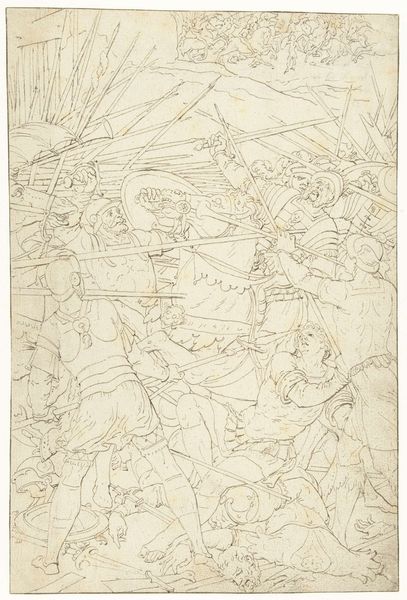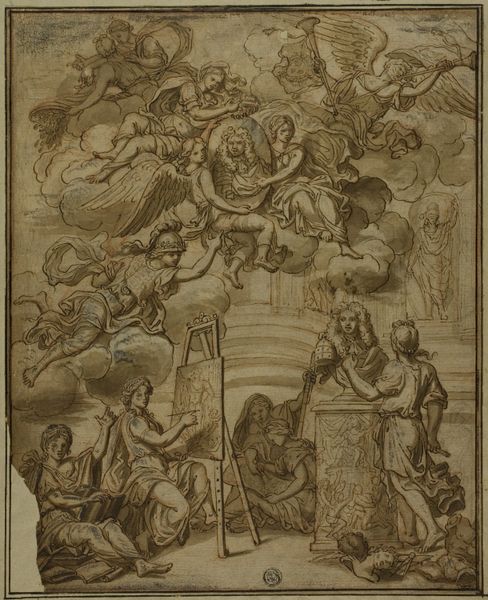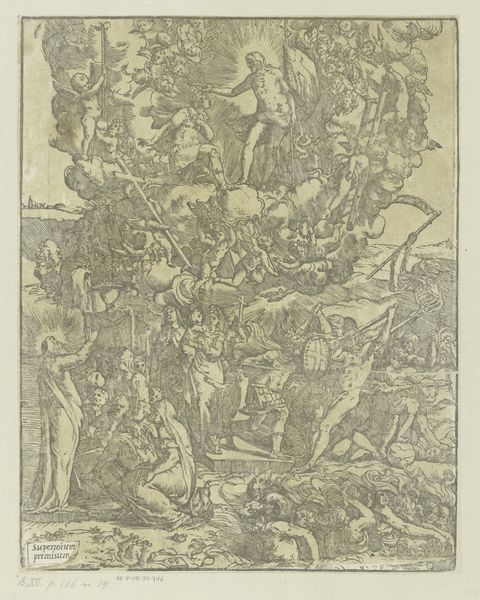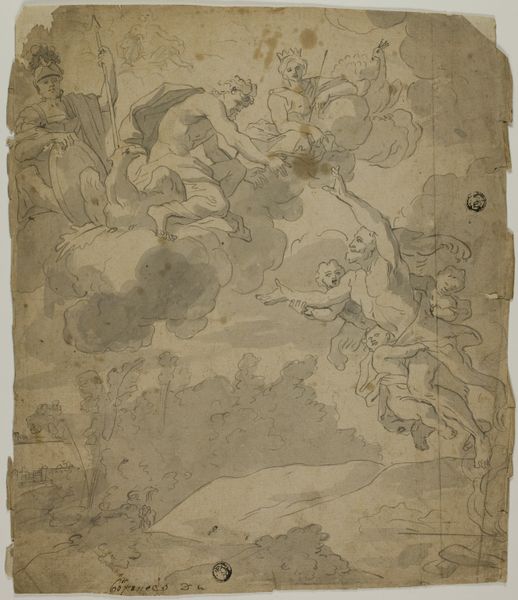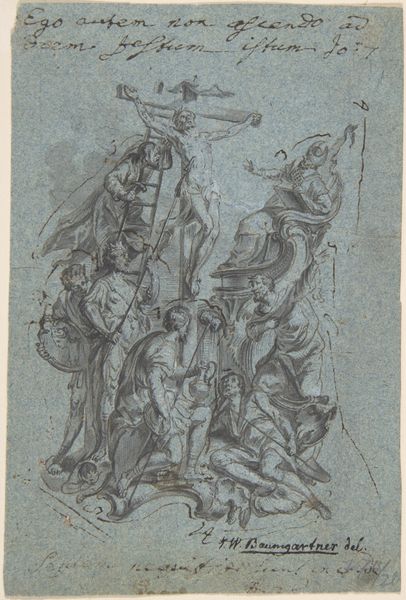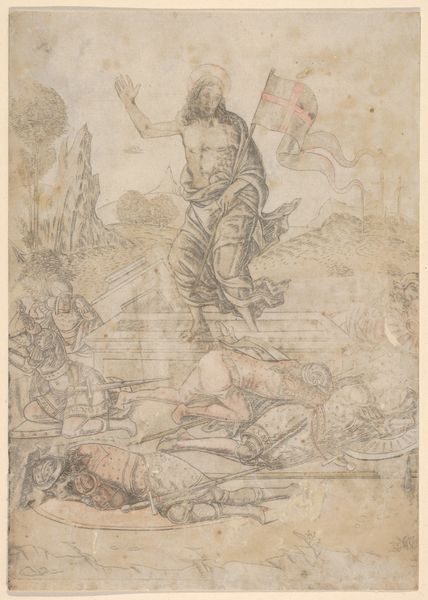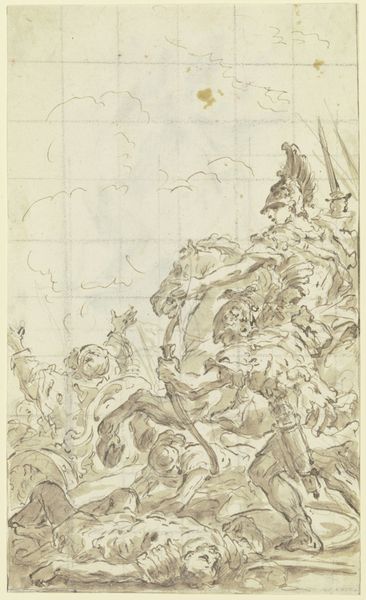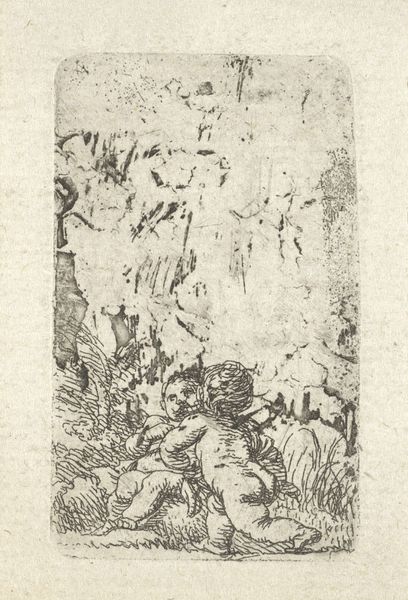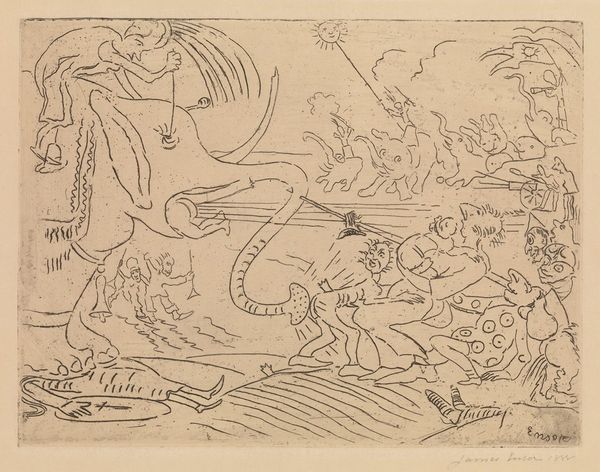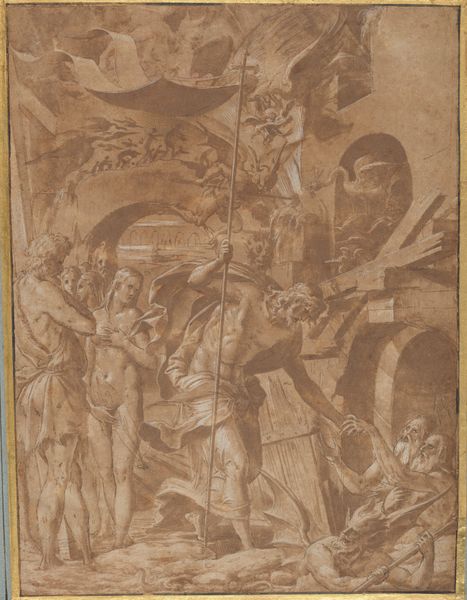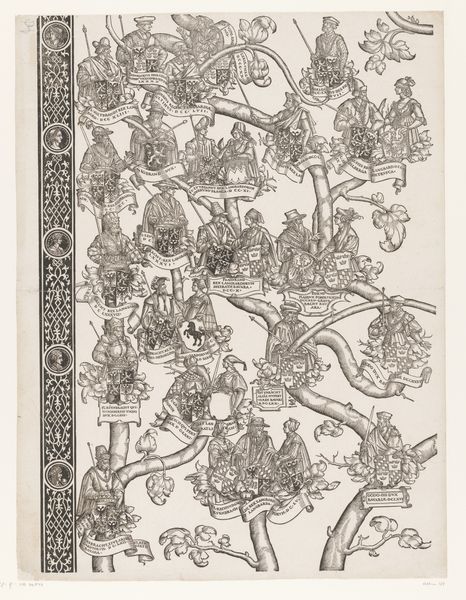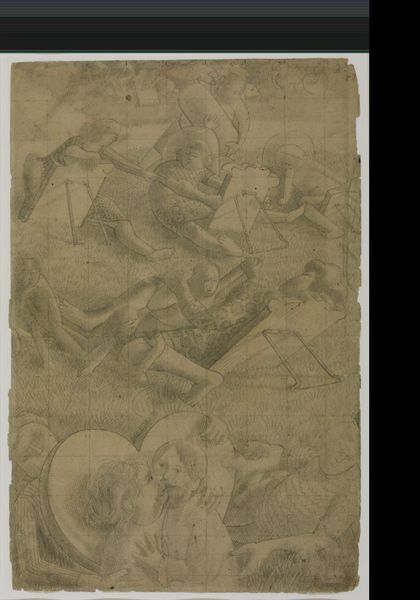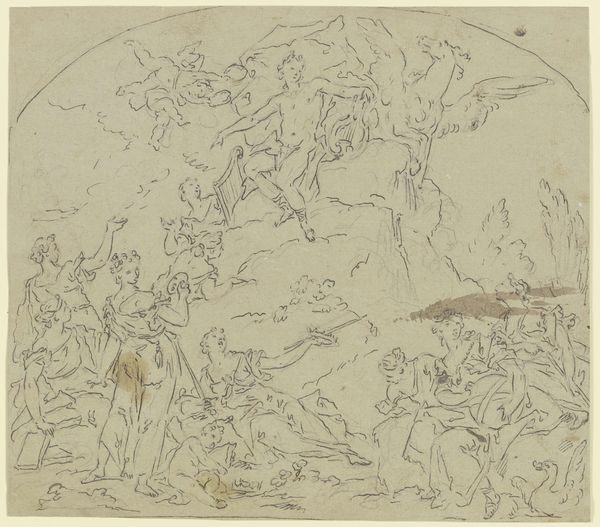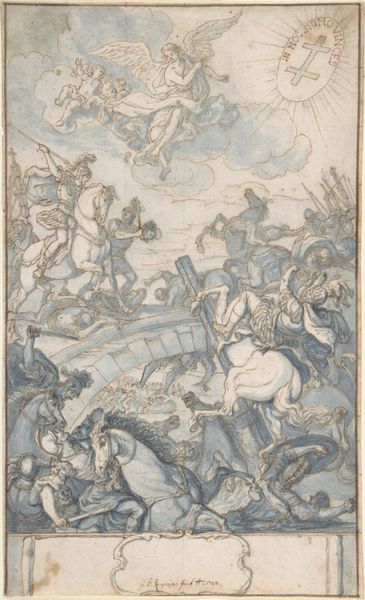
Fragment: Armed Warriors on Horseback Fighting Foot Soldiers n.d.
0:00
0:00
drawing, print, etching, paper, ink, pen, engraving
#
drawing
#
narrative-art
# print
#
etching
#
etching
#
figuration
#
paper
#
ink
#
pen
#
history-painting
#
engraving
Dimensions: 210 × 171 mm
Copyright: Public Domain
Editor: Here we have an intriguing fragment: "Armed Warriors on Horseback Fighting Foot Soldiers," made with pen, ink, and etching, artist unknown, and undated. It feels frenetic, a flurry of lines creating this chaotic battle scene. What draws your attention when you look at this? Curator: Immediately, the means of production become fascinating. Think about the engraver's workshop, the labor involved in creating these intricate lines, especially considering the social context, who this imagery would have been circulated to and consumed by, and what statements were being made through that consumption. What is being commodified? Editor: That's interesting; I hadn't considered the economics of art-making in relation to a piece like this. It does seem mass-producible. Does the style point to a specific historical moment in the art market? Curator: Precisely. Consider the shift from unique artistic creation to reproducible media. Etchings like this allowed for broader dissemination of imagery, potentially tied to political propaganda or even luxury good catalogues. The material, the ink, the paper - each could indicate specific social classes targeted by its distribution, a pre-cursor of printed newspapers or mass produced print advertisements. How does understanding the material making of this artwork change your perspective on it as art versus commodity? Editor: I guess I saw it as historical illustration, but now I see it more like early commercial art, where artistry and labor served to deliver a very particular social and commercial purpose. Almost like art as a weapon? Curator: Indeed! Thinking about art this way broadens our idea about aesthetics. Recognizing labor and the processes can offer great cultural context, wouldn't you say? Editor: Absolutely. Seeing beyond just the visual narrative has deepened my understanding considerably. I now see more of its possible meaning thanks to a material-centered understanding.
Comments
No comments
Be the first to comment and join the conversation on the ultimate creative platform.
